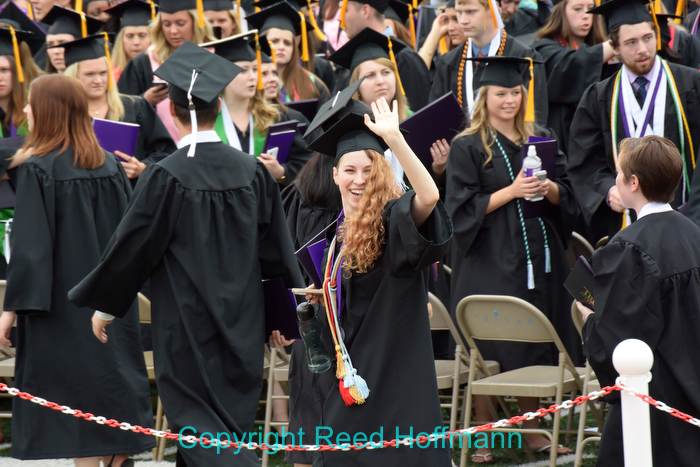We recently attended our daughter’s college graduation, and, of course, I was there shooting pictures. Which reminded me of two great ways to make your photography better: shoot lots and edit tightly.
We’re all familiar with the saying, “don’t put your eggs in one basket.” That applies to photography as much as it does to eggs. In the days of film, if you had a special scene in front of you, you shot extra frames to lessen the chance of a bad exposure or poor film processing ruining the photo. The downside, of course, was the cost of film. The more you shot, the more it cost, and the more likely you might run out of film and miss a shot while changing. Those constraints often forced you to shoot less than you’d like.
Today, thanks to the latitude of RAW digital capture, shooting at different exposure settings is less of a concern. And no chemical processing takes away that chance for problems. Using high-capacity cards, you should be able to shoot as many photos as you like. The only real cost in shooting extra frames now is the drain on the battery and extra shutter clicks. For that slight payment, you get real benefits. Here’s why…
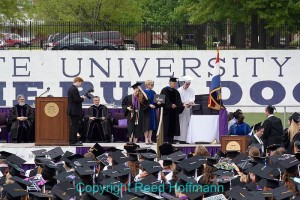
I shot 32 photos of Rachel from the moment she climbed the steps to the stage to when she sat down. But she’s nearly lost from this distance, and it was shot with a 300mm (equivalent) lens. Nikon 1 V3, Program, ISO 200, 1/500 at f/6.3. Photo copyright Reed Hoffmann.
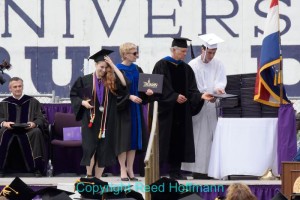
Cropping in makes Rachel more visible and removes some of the clutter around her. However I did want it to be clear that she’s going through commencement. Nikon 1 V3, Program, ISO 200, 1/500 at f/6.3. Photo copyright Reed Hoffmann.
“Moment” is a critical component of many pictures. Shoot pictures of your kid swinging a bat, or kicking a ball, and miss the ball? Failed pic. Trying to capture your dog in mid-leap and their feet are on the ground? You missed it. Even simple things, like someone blinking, can mean a ruined photo. And there’s also the subtle. How many times have you had someone reject five photos of themselves, and pick the sixth, for no reason you can discern? Slight changes in expression or position can make or break a picture. So my first rule to most photo students is to shoot lots. Don’t wait until after it’s too late to realize that the only frame you shot is soft or blurry or the person’s eyes are closed. Shoot, shoot, shoot. You can always delete afterwards. This is particularly important if you’re not sure when the “moment” might happen.
By “edit tightly,” I actually mean two things. First, go through your photos with a critical eye and only share the very best. Showing several pictures of essentially the same thing just takes away from the impact of the first one.
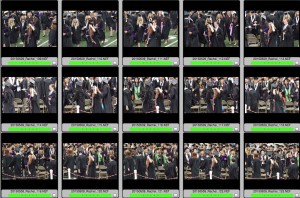
I knew my best chance of getting a closer shot of Rachel was when she exited the stadium at the end. Once I saw her I started shooting, as my wife was yelling to get Rachel’s attention. Of the 17 shots, only two had her looking at us, and only one showed her face clearly with the smile. Photo copyright Reed Hoffmann.
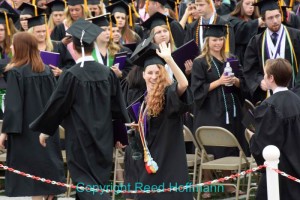
Here’s the best shot of Rachel waving to us, but she’s a small part of the frame. One advantage of lots of pixels (this camera has 18MP) is the ability to crop in and still have a lot of detail. Nikon 1 V3, Program, ISO 450, 1/250 at f/5.6. Photo copyright Reed Hoffmann.
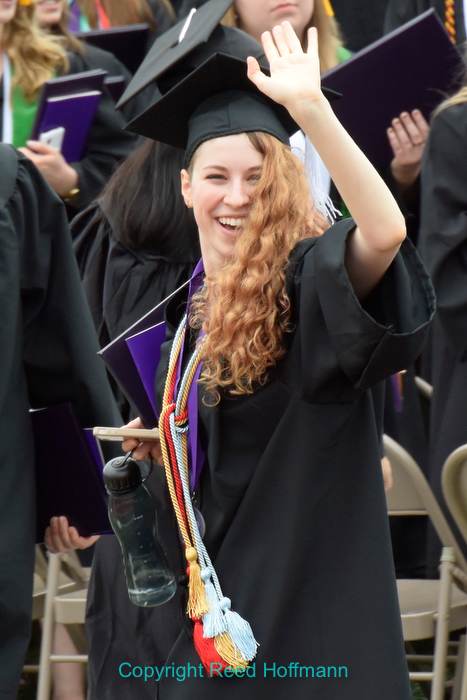
By cropping tightly to just Rachel, getting rid of all the other people, the photo becomes all about her. And that also shows her big smile better, giving you a feel for her joy at the completion of four years’ hard work. Nikon 1 V3, Program, ISO 450, 1/250 at f/5.6. Photo copyright Reed Hoffmann.
The second thing I mean when I say “edit tightly” is about cropping your photo. That’s easy to do whether you’re on a computer, a tablet or your phone. Look at the edges. Photography’s all about what you decide to let the viewer see. You frame with your camera, then, if that’s not exactly what you want, you crop it. I like to tell people, “crop till it hurts.” In other words, come in from all four sides as much as you can. Make sure that the framing you choose with that crop shows exactly what you want the viewer to see, and no more.
If you do those two things – shoot a lot, then edit carefully, you’ll have better odds of getting the picture you want, as well as making sure people have the reaction you want them to. Being lucky in photography is great, but what’s better is finding tools and techniques that make that luck seem to happen regularly. Shooting a lot, and careful editing, are two of the best for that.

